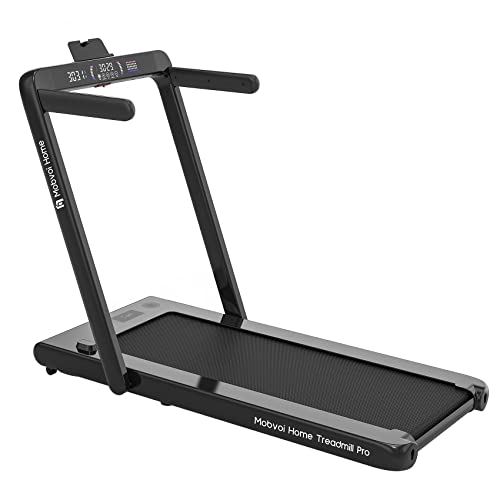What Experts From The Field Of Walking Machine Want You To Know?

The Walking Machine: A Comprehensive Guide to Your Fitness Companion
In today's busy world, where time is a luxury, keeping a consistent workout routine can be an obstacle. For many, a walking machine-- typically referred to as a treadmill-- serves as an ideal fitness buddy. This short article supplies an in-depth take a look at walking machines, including their advantages, types, maintenance pointers, and frequently asked concerns.
Why Choose a Walking Machine?
Walking machines offer a practical and reliable method to incorporate cardiovascular workout into life. Here are a number of crucial advantages:
- Convenience: Walking machines allow people to exercise anytime, no matter climate condition or time restraints. They are perfect for hectic schedules.
- Versatility: Users can walk, jog, or perform at their own speed and strength.
- Safety: Walking machines present a lower danger of injury compared to outdoor walking or running, particularly for beginners or those recovering from injuries.
- Tracking Progress: Many treadmills come with built-in monitors that track metrics like speed, distance, and calories burned.
Types of Walking Machines
When thinking about a walking machine, it's important to choose the ideal type based on private physical fitness objectives and area constraints. Below are the primary types of walking machines:
| Type | Description |
|---|---|
| Manual Treadmills | These machines do not have a motor, and users require to walk or go to turn the belt. |
| Electric Treadmills | Powered by an electric motor, permitting users to set the speed and slope effortlessly. |
| Folding Treadmills | Developed for simple storage, these treadmills can be folded when not in use. |
| Desk Treadmills | Ideal for a double work and workout environment, these compact machines allow walking while working. |
| Incline Trainers | These enable users to simulate uphill walking, improving exercise strength and calorie burn. |
Picking the Right Walking Machine
Picking the ideal walking machine can substantially affect motivation and efficiency. Here are some factors to consider:
Key Features to Look For
- Motor Power: An effective motor guarantees a smooth and constant workout. For periodic walkers, a 1.5 HP motor is normally adequate; for much heavier usage, search for 3.0 HP and above.
- Belt Size: A broader and longer belt offers more area for a comfy stride. Requirement sizes vary from 16 inches broad and 50 inches long.
- Slope Options: Adjustable incline settings can mimic walking or running uphill, increasing the intensity of the workout.
- Shock Absorption: Good shock absorption reduces the risk of joint injuries and improves comfort.
- Console Features: Look for integrated workouts, heart rate displays, and connection functions like Bluetooth for a more appealing experience.
Budget plan Considerations
Walking machines can be found in a broad variety of rates, depending upon functions and construction quality. Here's a rough budget breakdown:
| Price Range | Functions |
|---|---|
| Under ₤ 300 | Fundamental handbook or little electric treadmills with restricted functions. |
| ₤ 300 - ₤ 700 | Advanced electric treadmills with slope, medium power motors, and better warranties. |
| ₤ 700 - ₤ 1500 | Top quality electric treadmills with larger built-in display screens, comprehensive functions, and warranties. |
| ₤ 1500 and above | High-end designs offering sophisticated innovation, features, and resilient construction for severe fitness enthusiasts. |
Upkeep Tips for Your Walking Machine
To guarantee longevity and optimum performance of a walking machine, think about the following upkeep tips:
- Regular Cleaning: Dust and sweat can accumulate on the machine and the belt. Wipe down the surfaces and tidy the belt frequently.
- Lubrication: Depending on the design, lubricating the running belt occasionally can prevent wear and tear. Check New Treadmills for suggested lubrication schedules.
- Evaluation: Periodically inspect the machine for loose screws or used parts. Tighten up and replace as needed.
- Calibration: Occasionally, check the calibration of your machine's metrics to guarantee they provide accurate information.
- Correct Use: Follow the manufacturer's recommendations for weight limitations and operational guidelines.
FAQs About Walking Machines
1. Are walking machines a good exercise?
Yes, walking machines provide an exceptional cardiovascular workout, can assist with weight-loss, and enhance total health.
2. How typically should I use a walking machine?
Go for a minimum of 150 minutes of moderate-intensity aerobic activity weekly, which can quickly be attained with regular sessions on a walking machine.
3. Can I lose weight on a walking machine?
Yes, incorporating a walking machine regimen into a healthy diet plan can promote weight-loss, especially if integrated with intervals and incline training.
4. Is it safe for elders to use a walking machine?
Yes, walking machines can be safe for seniors with low-impact settings and security features like handrails. However, New Treadmills ought to speak with their doctor before starting any workout program.
5. What's the difference between a treadmill and a walking machine?
The term "walking machine" typically describes a treadmill intended for walking, while "treadmill" can describe machines used for various intensities, including running.
With their flexibility and benefit, walking machines can considerably enhance one's physical fitness journey. By thoroughly selecting the best type, making sure correct maintenance, and including various exercise strategies, users can optimize their walking machine's benefits. Just like any exercise regimen, consistency is key to attaining enduring physical fitness results.

